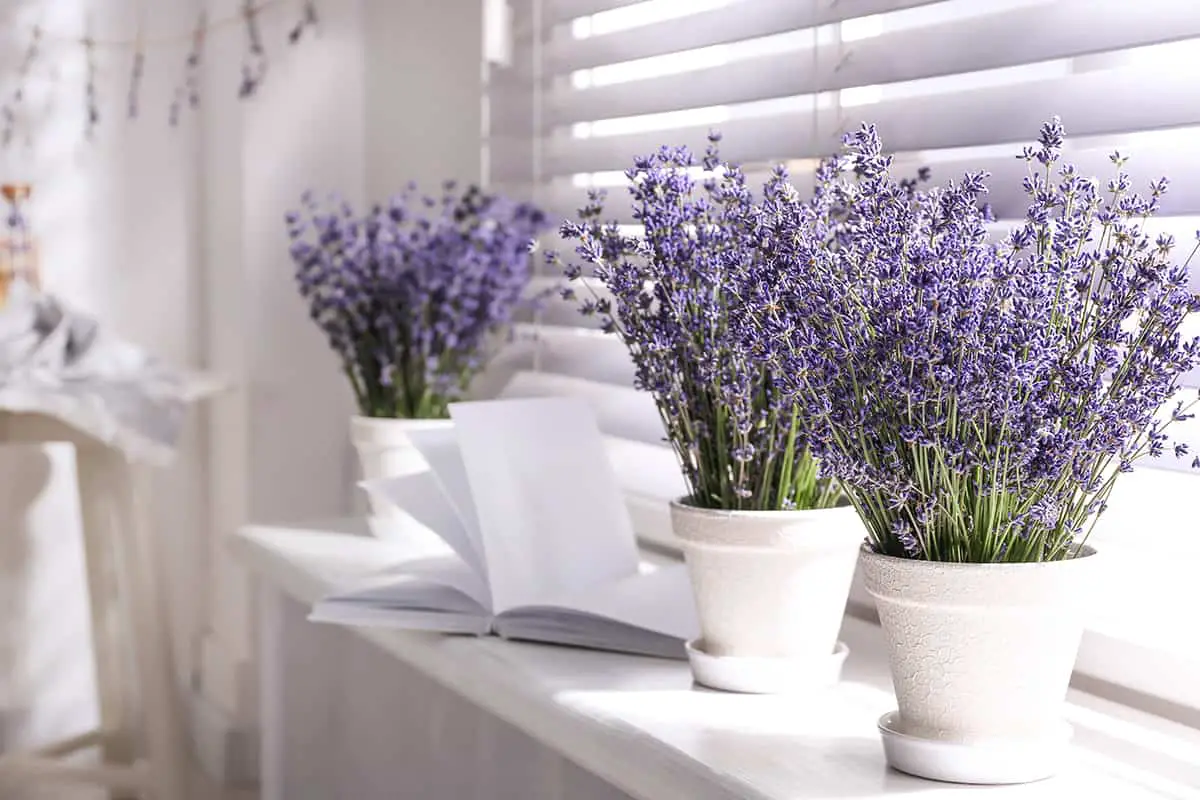The moment you open the door and are welcomed by the sweet aroma of gardenias, you know you’re home. Fragrant indoor plants have the power to transform any living space into an aromatic sanctuary.
In this article, we dive into the world of plants that do more than just brighten up your home—they envelop it in delightful scents, making every room a more inviting and relaxing space.
Table of Contents
Jasmine
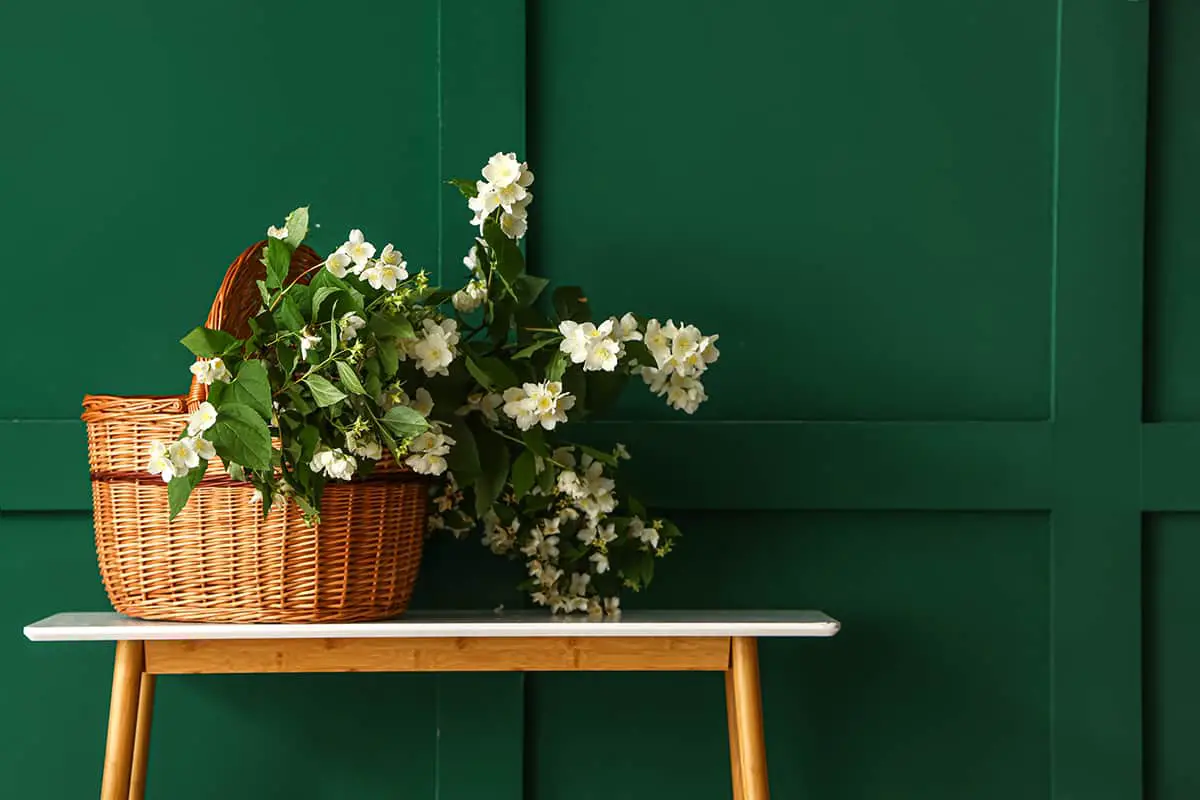
Jasmine enlivens your indoor space with an intoxicating fragrance. This plant’s small white flowers emit a rich, sweet scent. You grow jasmine indoors mainly for its perfume. Jasminum polyanthum is a popular indoor variety.
Jasmine thrives in a sunny window. It prefers well-drained soil. In winter, lower temperatures near 60°F help it bloom. A vine, jasmine requires pruning for shape and support.
Indoor jasmine can face pests like scale and whitefly. Regular checks and treatment keep your plant healthy. Your jasmine may need more care than some indoor plants, but its delightful aroma is rewarding.
Gardenia
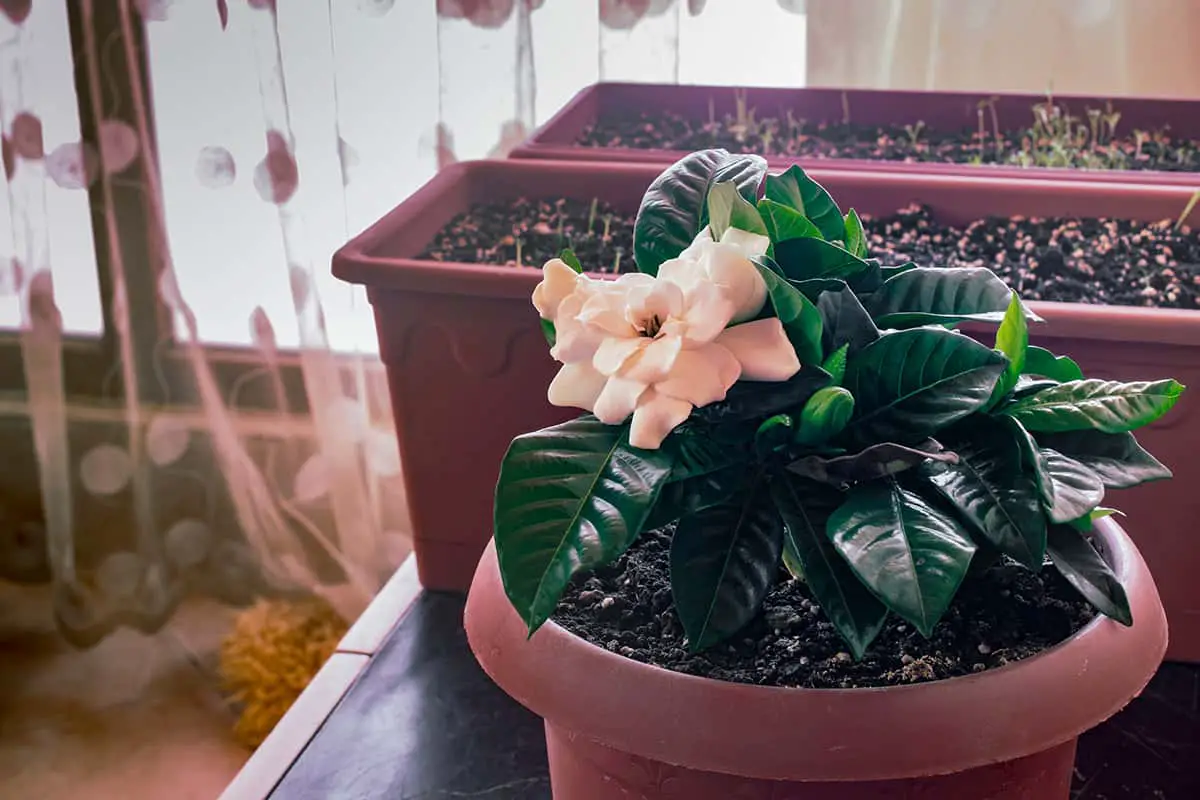
Gardenias are cherished for their strong fragrance and luscious white flowers. Known for their glossy, dark green leaves, these plants are a symbol of purity and sweetness.
Your Gardenia requires bright, indirect light. Aim to maintain indoor temperatures between 60°F and 75°F. Protect the plant from cold drafts and heating vents.
Keep the soil consistently moist, but not soggy. High humidity benefits the Gardenia, so consider placing it on a pebble tray or using a humidifier.
Gardenias prefer acidic soil with a pH of 5.0 to 6.0. Use an iron-rich fertilizer to prevent chlorosis and promote healthy, green leaves.
Regular pruning helps maintain a compact form of the plant. Always cut just above a leaf node or junction to encourage new growth.
Scented Geranium
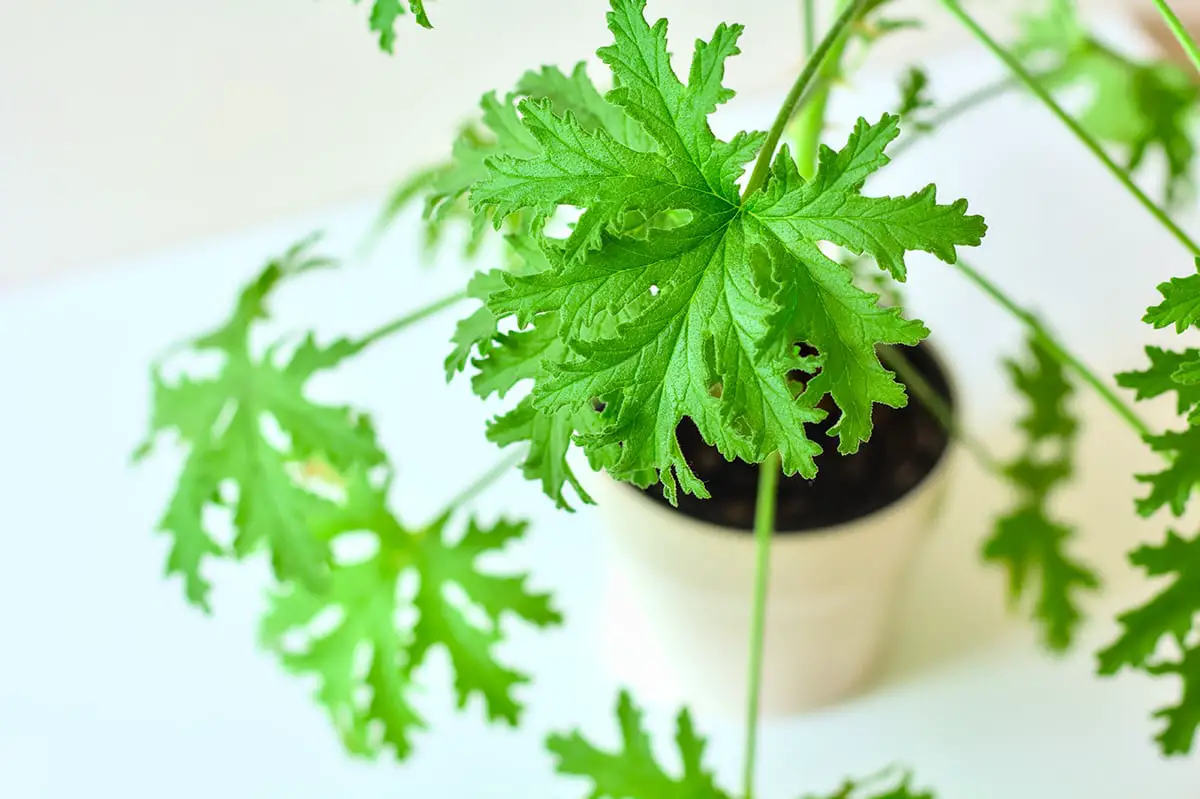
Scented Geranium ranges widely in scent, including rose, citrus, and mint. You will find that scented geraniums enhance your home with their aromatic leaves.
Scented geraniums prefer well-drained soil. Make sure to provide enough water so the soil is moist but not soggy. They thrive in containers with proper drainage and need regular pruning to encourage bushy growth.
Hundreds of types of scented geraniums are available. They come in different sizes, foliage textures, and colors. Your choice can fit any indoor arrangement, from tall-standing varieties to those that cascade.
Lavender
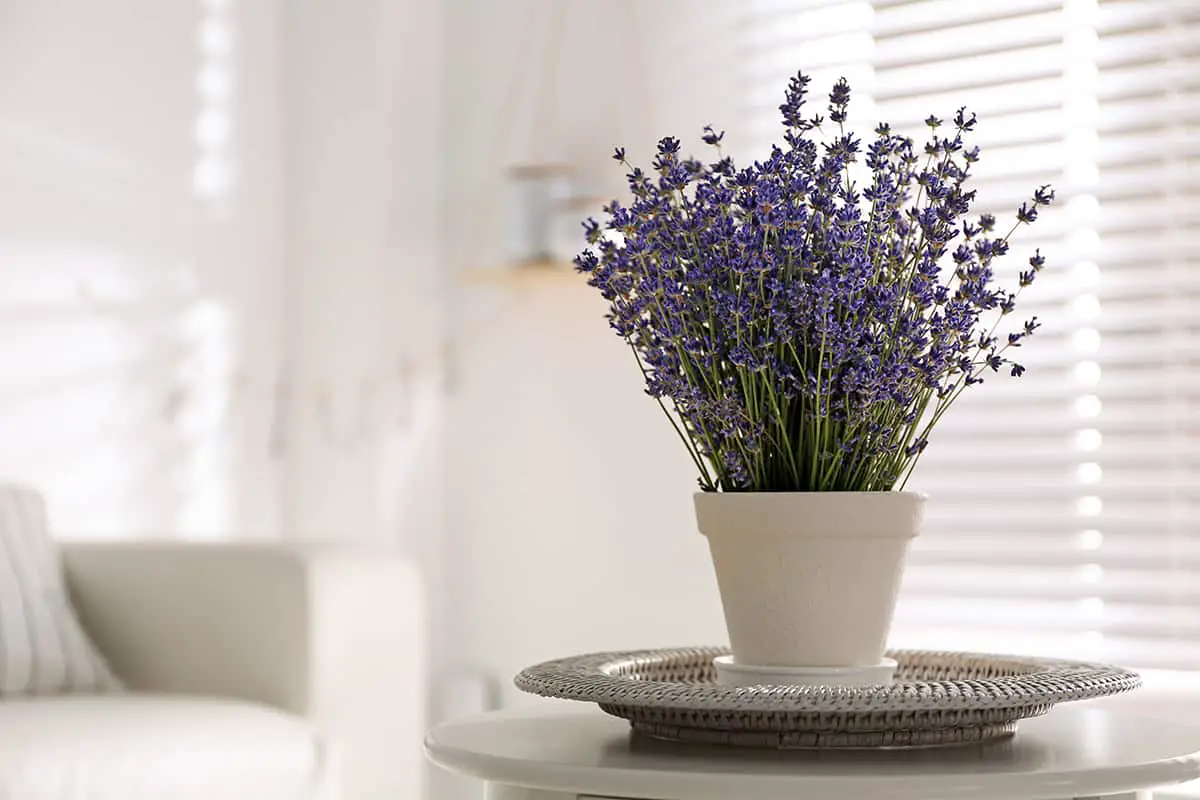
Lavender plants bring a soothing aroma to your indoor space. They have fragrant flowers that come in shades of purple. As a plant native to Europe, lavender thrives in bright, sunny spots with well-draining soil.
To thrive, indoor lavender plants need bright, direct sunlight for at least 3-4 hours daily. They prefer well-draining, alkaline soil with low organic matter. Watering should be done sparingly, only when the soil has dried out completely, to avoid overwatering. After the plant has flowered, pruning is recommended not only to maintain its shape but also to encourage bushier growth.
Lavender is a low-maintenance plant that requires the soil to be kept moist but never wet, as standing water can lead to root rot. This plant thrives in cool indoor temperatures paired with low humidity and benefits from being placed in an area where air can circulate freely around it.
Lavender is renowned for its delightful fragrance, making it a natural air freshener for any room. Beyond its scent, lavender has calming properties that can aid in stress relief, potentially improving sleep quality when used as a sleep aid. Its attractive purple flowers also make it a decorative addition to any space.
The soothing effects of lavender are multifaceted. Adding a few leaves to a bath can create a relaxing experience, while dried lavender can be used to fill sachets, offering a gentle scent in drawers and closets.
Eucalyptus
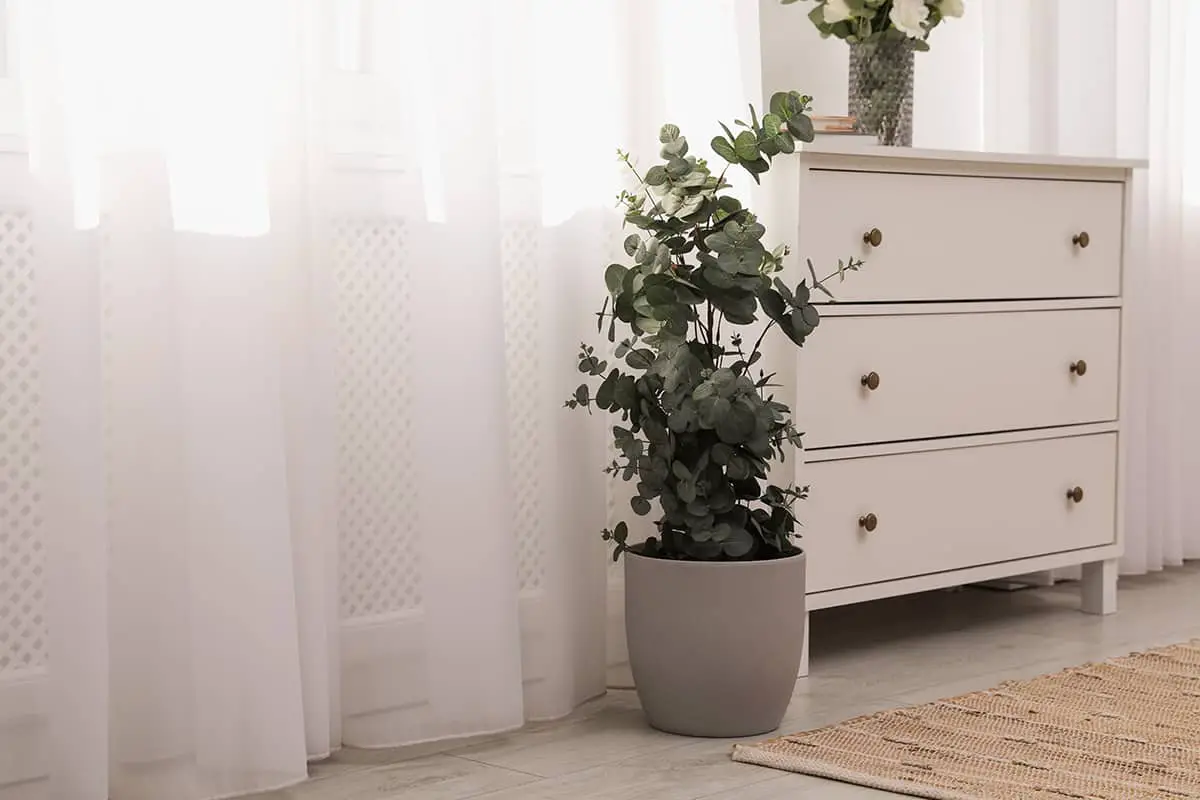
Eucalyptus, known for its distinct aroma, enhances your indoor space. You recognize its fragrance from spa products. The plant’s leaves release a refreshing scent.
Your eucalyptus needs bright light. Place it near a sunny window. It prefers well-drained soil. Let the soil dry between watering sessions.
This plant offers more than a pleasant smell. It may clear your airways. People use it to repel insects too.
Protect your eucalyptus from cold drafts. Bring it indoors before the first frost if potted outdoors. Prune regularly for the best growth.
Mint
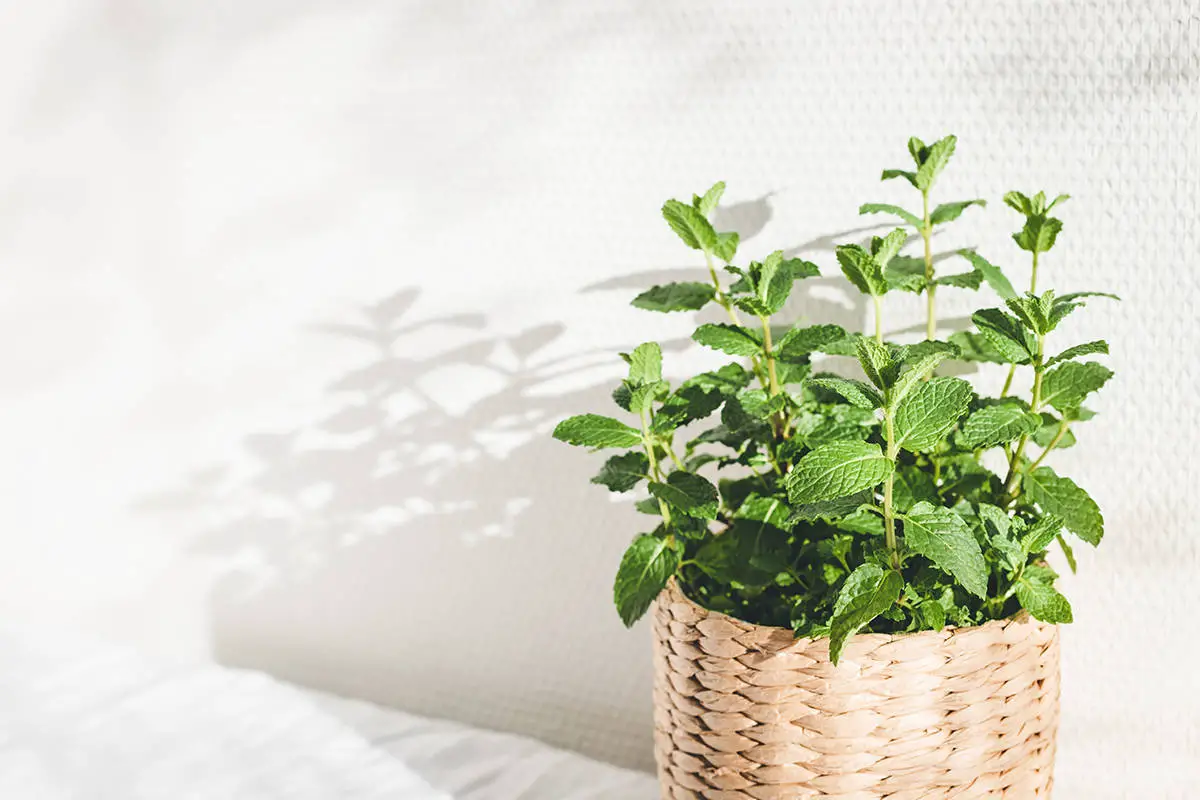
Mint is a refreshing choice for your indoor garden. You will enjoy its crisp aroma by simply brushing the leaves. Known for its strong scent, mint thrives with minimal care.
This plant prefers a well-lit spot in your home. Ensure it receives at least six hours of sunlight daily. Too much shade will reduce its fragrance potency. To maintain your mint’s aroma, give it a sunny window.
Water mint when the soil feels dry. Over-watering can harm the plant. Mint’s soil must be kept moist but never waterlogged.
Mint is more than just fragrant. It’s edible and can enhance your meals. Add its leaves to your tea or garnish your dishes for a flavorful twist. Mint’s versatility makes it a household favorite.
Mint varieties, like Mountain Mint or Indian Mint, have strong, pleasant aromas. While they differ in scents, all mint types add freshness to your indoor spaces.
Citrus

You can enjoy the sweet, zesty scent of the citrus plants throughout your home. Citrus plants are loved for their shiny green leaves and aromatic flowers. This addition to your indoor garden promises a refreshing aroma and a touch of nature.
Citrus trees need moderate conditions to thrive. They prefer daytime temperatures around 65°, with a slight drop at night. Ensure they get plenty of sunlight, like a south-facing window, for the best growth. Good care rewards you with their characteristic white blooms.
If you choose to grow citrus indoors, consider varieties suited for it. Satsuma oranges, a type of tangerine, are great. They produce abundant flowers with a delightful fragrance. ‘Ponderosa’ and ‘Meyer’ are two types of lemons well-suited as houseplants.
Your citrus tree might bloom indoors when typically no natural pollinators are present. Gently hand-pollinating your plants can increase their chances of fruiting. The process involves transferring pollen from one flower to another. This step is crucial for cultivating citrus fruits in your home.
Sweet Bay
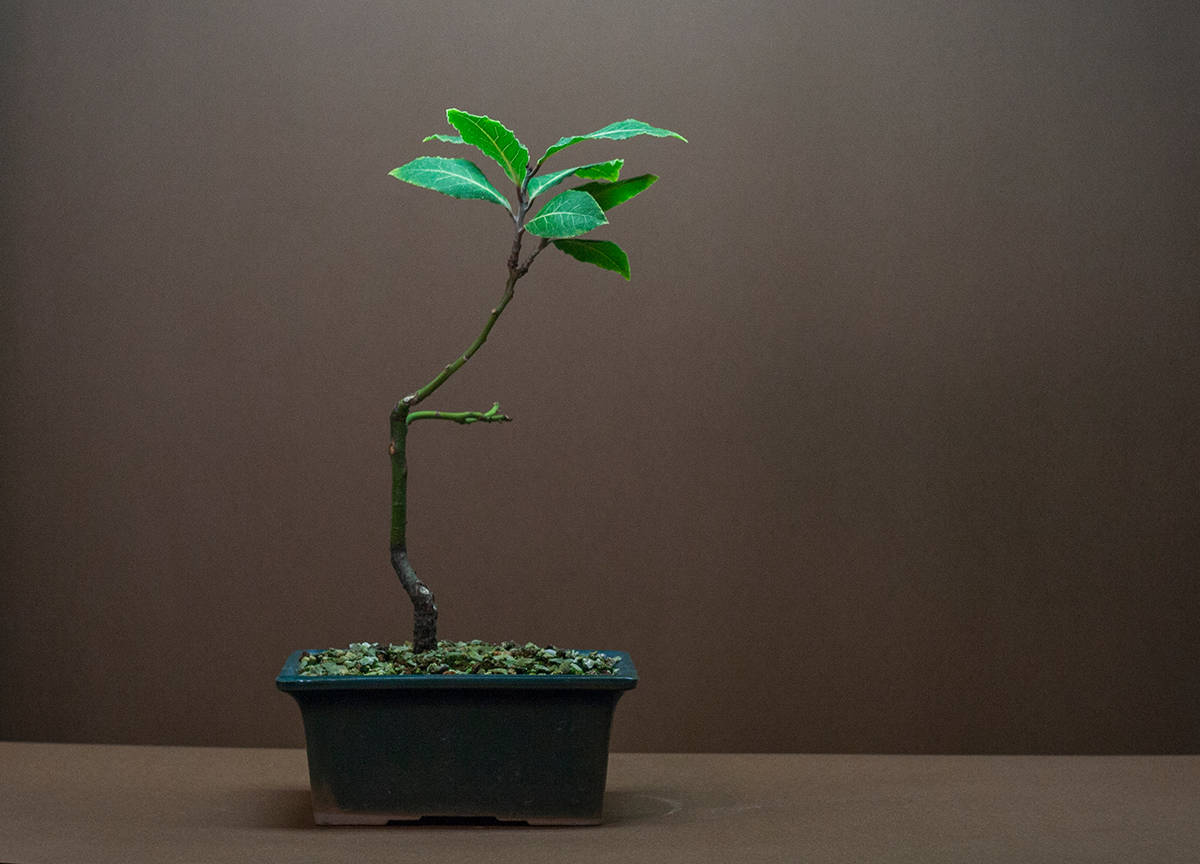
Sweet Bay plants offer a delightful fragrance for your indoor space. You can easily grow Sweet Bay in a container, bringing the lush essence of the Mediterranean into your home. The aromatic leaves serve as a culinary treasure, commonly known as bay leaves, that enhance many dishes.
This plant, Laurus nobilis, thrives indoors with proper care. Ensure that Sweet Bay gets enough light and watch the watering. Too much water can harm the plant, so let the soil dry between waterings. Pruning will keep your Sweet Bay bushy and manageable.
If you enjoy a touch of greenery that has both aesthetic and practical uses, Sweet Bay is a great choice. Its leaves provide an unmistakable aroma and flavor, beloved in kitchens worldwide. Owing to its manageable size when potted, the Sweet Bay easily adapts to living indoors, making it a popular choice for gardeners and chefs alike.
Remember, Sweet Bay likes a bright spot in your home and does not demand much. Keep the soil moderately dry and provide some humidity if you can.
Rosemary
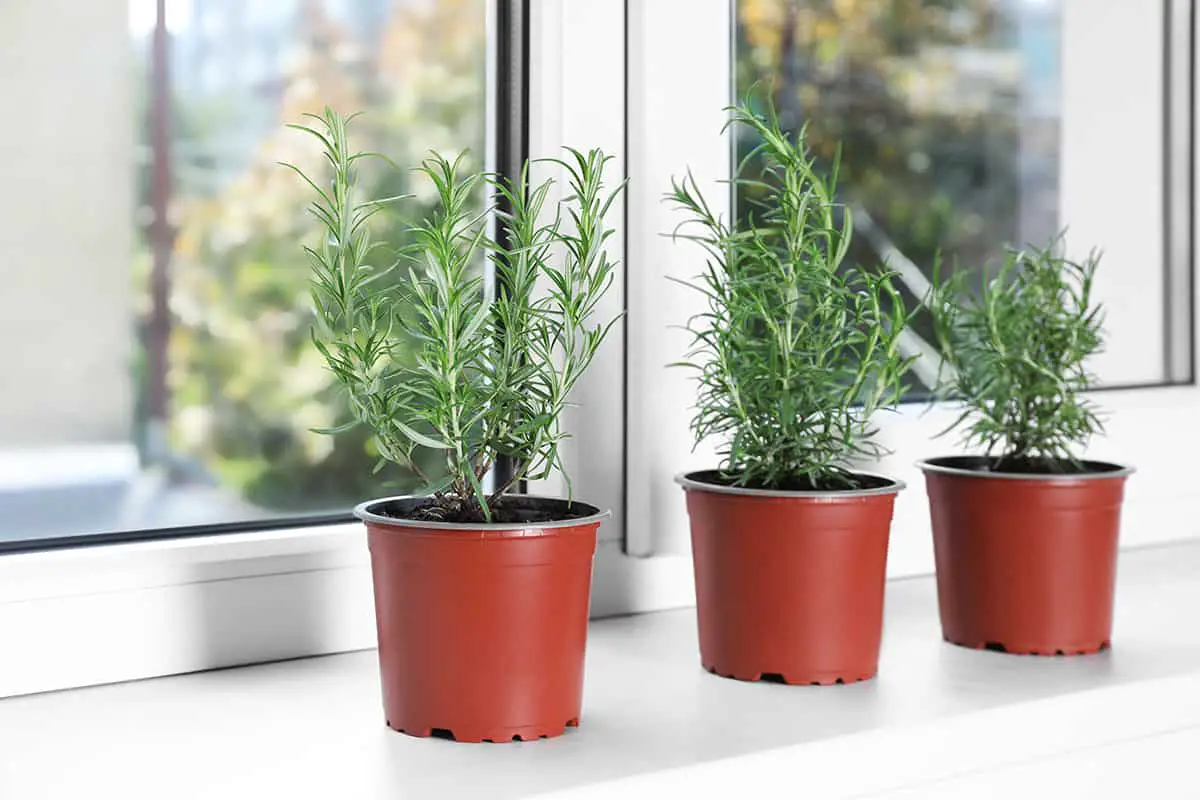
Rosemary is an aromatic herb that thrives indoors with the proper care. It’s a perennial, evergreen plant known for its needle-like leaves and distinctive fragrance. You can grow rosemary in a sunny window, as it requires ample light to flourish.
Keeping the soil well-drained is vital for your rosemary plant’s health. It’s adaptable but prefers regular watering schedules, ensuring the soil isn’t too moist. Overwatering can lead to root issues. This herb also appreciates a pot with good drainage and air circulation.
If you’re after a touch of the Mediterranean, rosemary’s origins trace back to that region. It can lend both culinary and ornamental value to your space. As a bonus, it’s generally easy for beginners to care for.
Basil
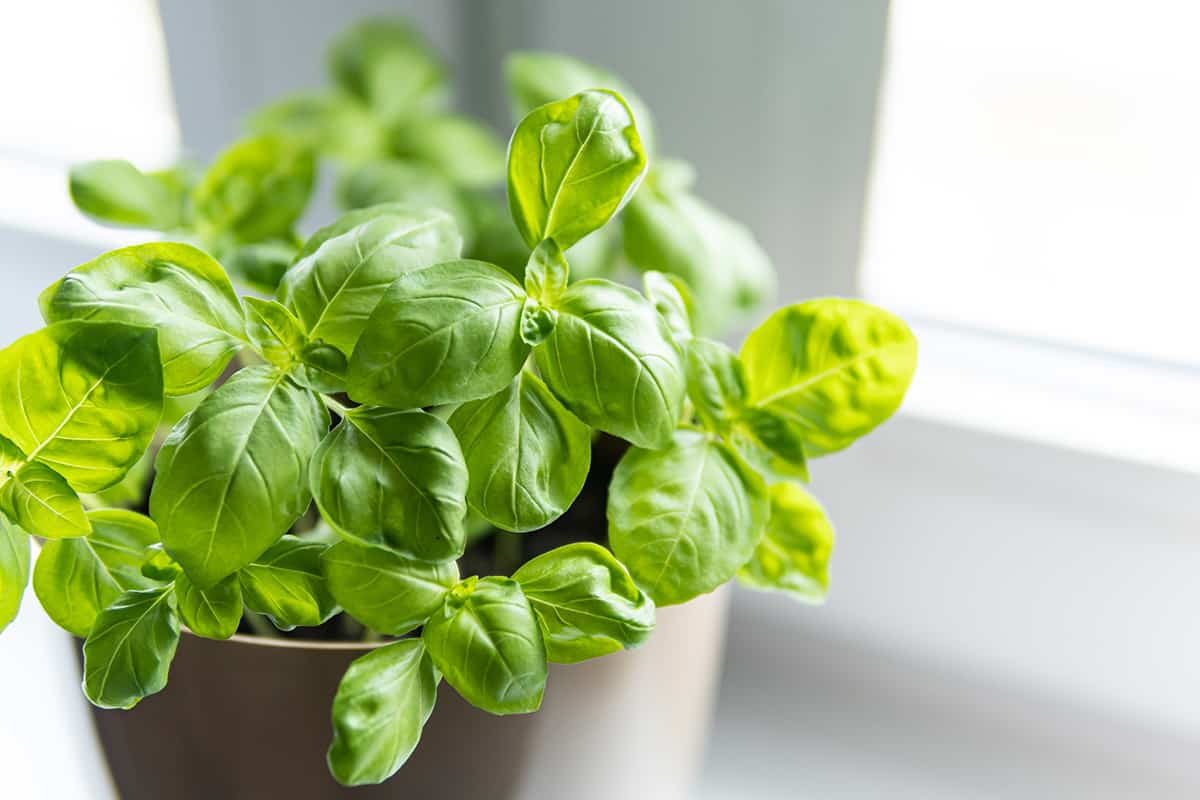
Basil plants add a fragrant aroma to your indoor garden. They are famous herbs with both culinary and ornamental value.
To grow basil indoors, you need a sunny window. Your basil requires around six hours of direct sunlight each day. Make sure the plant gets enough light to maintain its health and fragrance.
Keep the soil moist but not soggy. Overwatering can harm the plant. Regular trimming encourages bushier growth. Use the pruned leaves in your cooking for a burst of flavor.
Cuban basil and Lettuce Leaf basil are good types for indoor gardening. They are aromatic and can serve as a nice edging plant due to their size. Cuban basil is particularly robust, adding vibrant greenery to your home.
Remember to avoid cold drafts and ensure that the night temperatures don’t drop too much. Basil prefers warm environments, similar to its native tropical regions. With proper care, your indoor basil can grow up to two feet tall, becoming a centerpiece of your home herb garden.
Orchids
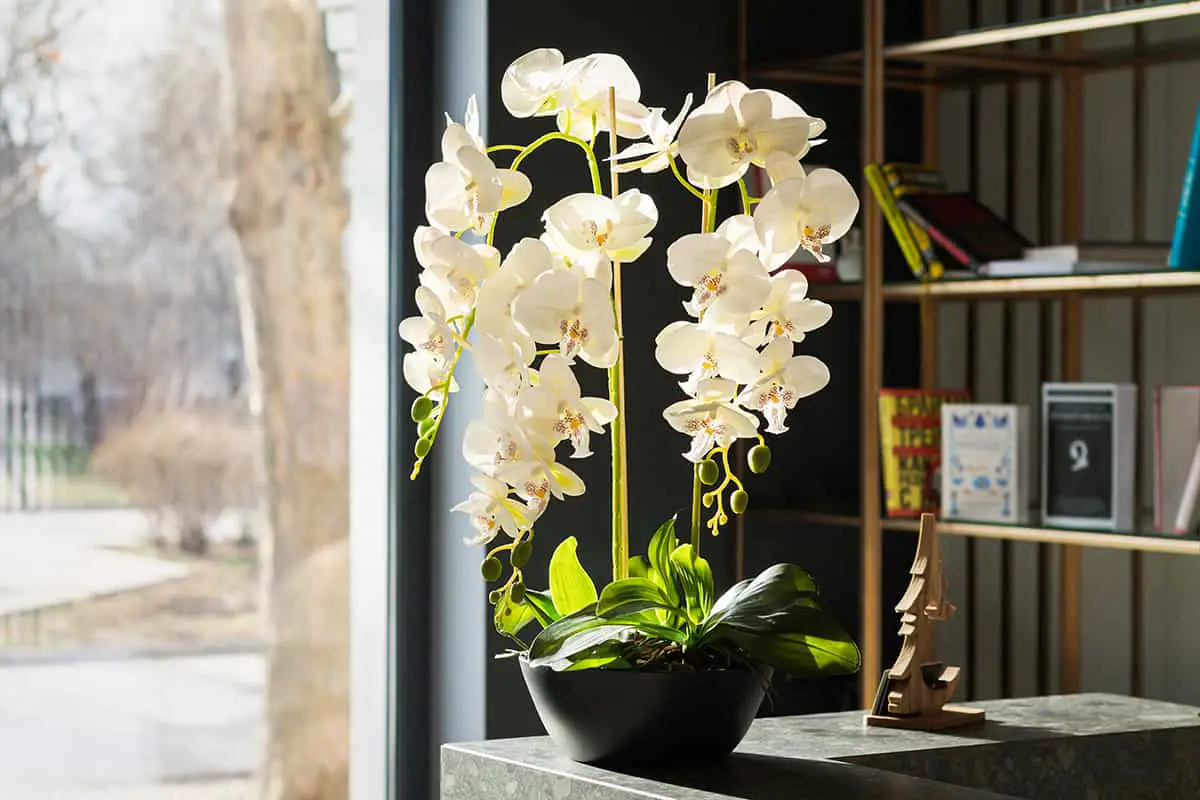
Orchids are exquisite flowering plants that enhance your indoor spaces with fragrance and color. They belong to one of Earth’s largest plant families, Orchidaceae, with a wide variety of species. In your home, these tropical beauties can thrive with the right care.
Caring for orchids is simpler than you might think. Provide them with modest light, like from an east or west window. Too much direct sunlight can harm their delicate petals. A north-facing window can also work well for orchids that tolerate lower light levels.
Your orchids need specific temperature ranges. They prefer nighttime temperatures around 60°F, and daylight temperatures should not exceed 90°F. Always keep these plants away from drafts, vents, and extreme temperatures to maintain a stable environment.
Watering orchids properly is crucial. They require a well-draining pot and should be watered only when the top inch of soil feels dry. Over-watering can lead to root rot, a common issue for orchids. Use lukewarm water to avoid shocking their roots.
Plumeria

Plumeria plants bring a captivating fragrance to your indoor garden. Known for their beautiful blooms and sweet scent, these plants are often associated with the tropics. You can grow plumeria indoors with some care. They prefer a sunny window and well-draining soil to thrive.
Plumeria loves bright light. Ensure it gets at least six hours of sunlight. Water the plumeria deeply when the soil feels dry to the touch. Allow the soil to dry between waterings to prevent root rot.
These plants enjoy warmth. Keep your plumeria in a room where temperatures are above 65°F (18°C). They can tolerate lower humidity levels, but a humidifier can improve plant health.
Use a soil mix that drains quickly for the Plumeria plants. Add perlite or sand to enhance drainage. When potting your plumeria, choose a container with drainage holes. This helps avoid water accumulation at the roots.
Stephanotis
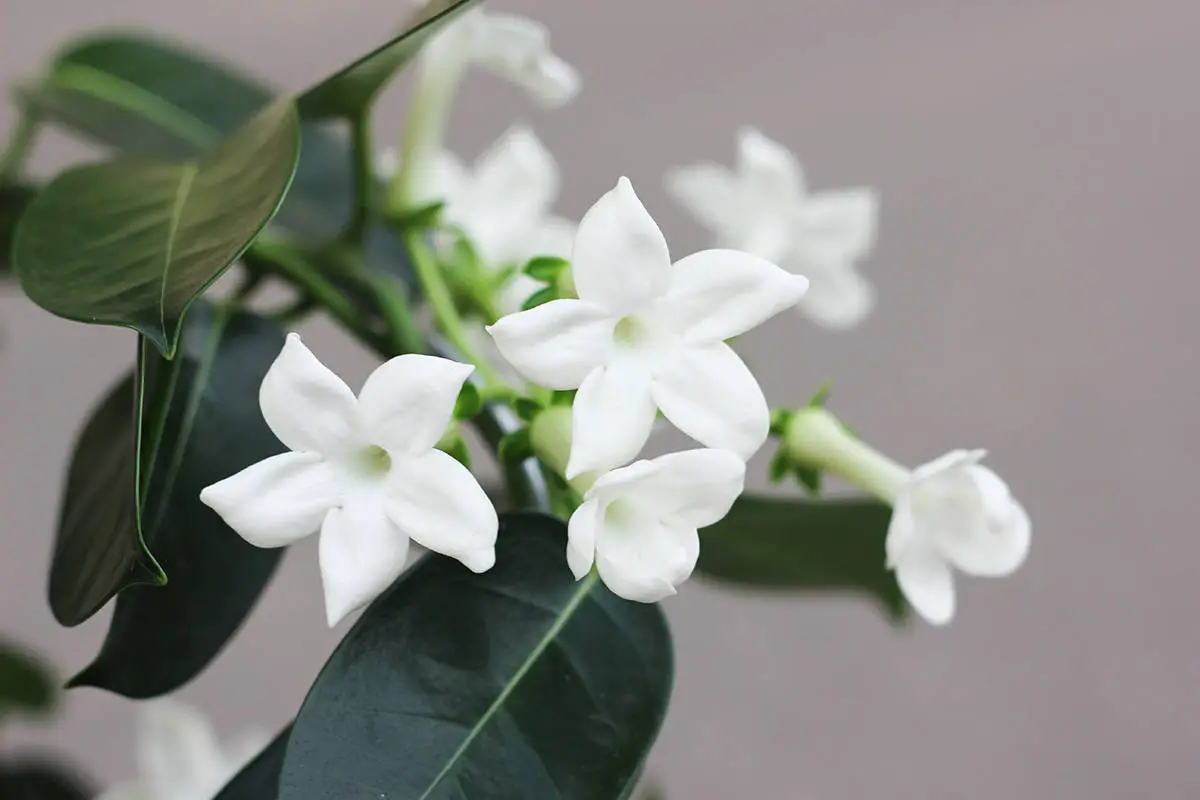
Stephanotis plants offer you fragrant blooms right in your home. Often known as Madagascar jasmine, the Stephanotis floribunda is not true jasmine. You’ll find its flowers intensely fragrant and waxy white.
Your Stephanotis needs bright, indirect light for optimal growth. Ensure you water the plant when the soil feels dry. The vine prefers a moist, well-draining potting mix. Regular misting helps to maintain the humidity it loves.
This climbing vine can grow more than 20 feet under ideal conditions. Glossy, oval leaves enhance the beauty of its fragrant flowers. You can train your Stephanotis on a trellis or allow it to hang gracefully.
For best results, fertilize your Stephanotis during the growing season. Remember to reduce feeding in the winter months.
Freesia
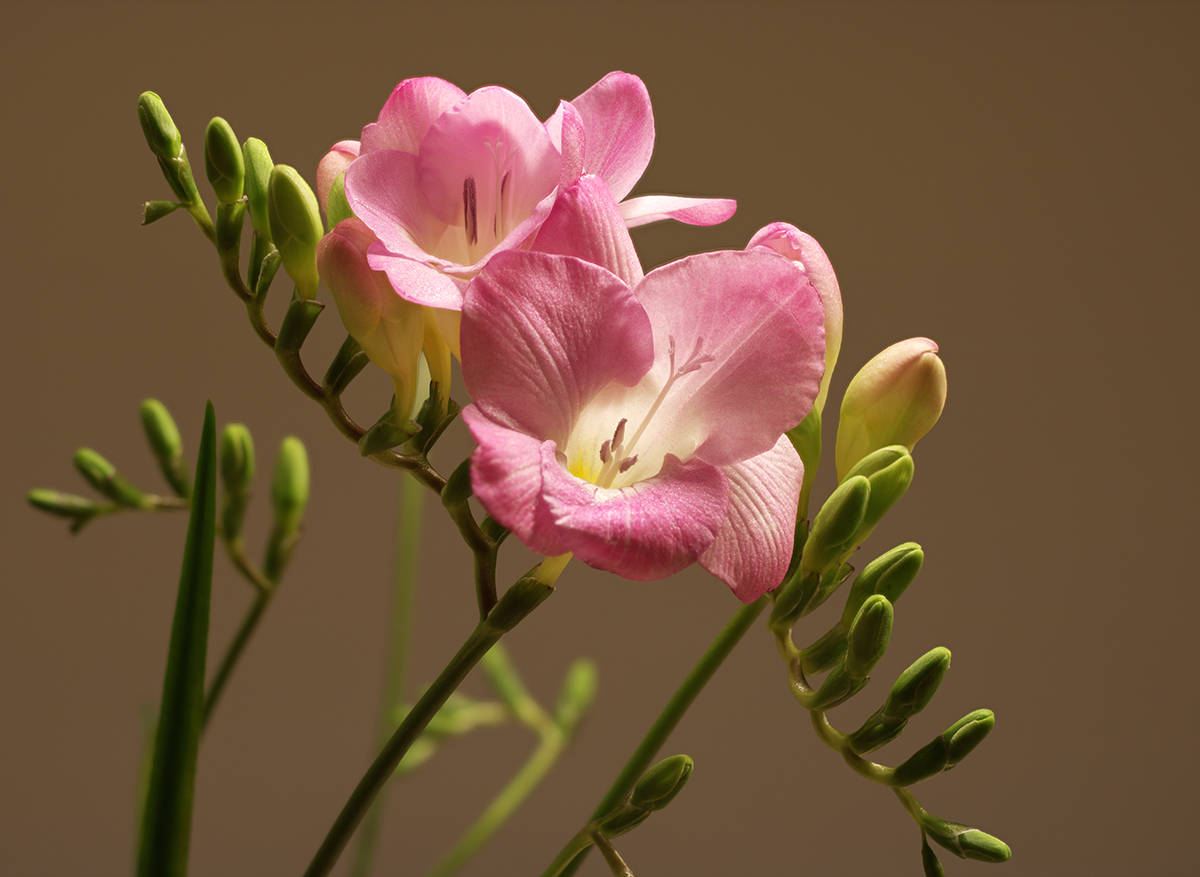
Freesias are ideal for adding a pleasant scent to your space. Their tubular blossoms are not only visually appealing but also emit a sweet fragrance. You can easily grow them indoors, and they thrive with proper care.
When you plant freesias indoors, choose a pot with good drainage. Plant their corms, which are bulb-like structures about an inch deep. It’s important to position them with the pointed ends facing up. They prefer well-drained soil and need to be kept moist, without overwatering.
Light is crucial for freesias. Make sure they get plenty of it by placing them near a south-facing window. This exposure ensures they receive enough direct sunlight to bloom. Blooms typically appear within 10 to 12 weeks, rewarding your efforts with their delightful aroma and colorful display.
Maintaining the right temperature is also key. Freesias are sensitive to cold and can be injured below 25 degrees Fahrenheit. If you live in a colder climate, you may need to winterize your freesias indoors or consider them as full-time houseplants.
Enjoy the beauty and fragrance of freesias as cut flowers, too. They can last over a week in a vase, provided your home is not too warm. Ensure good air circulation around your freesias. This step is necessary to promote healthy growth and prevent issues.
Hoya
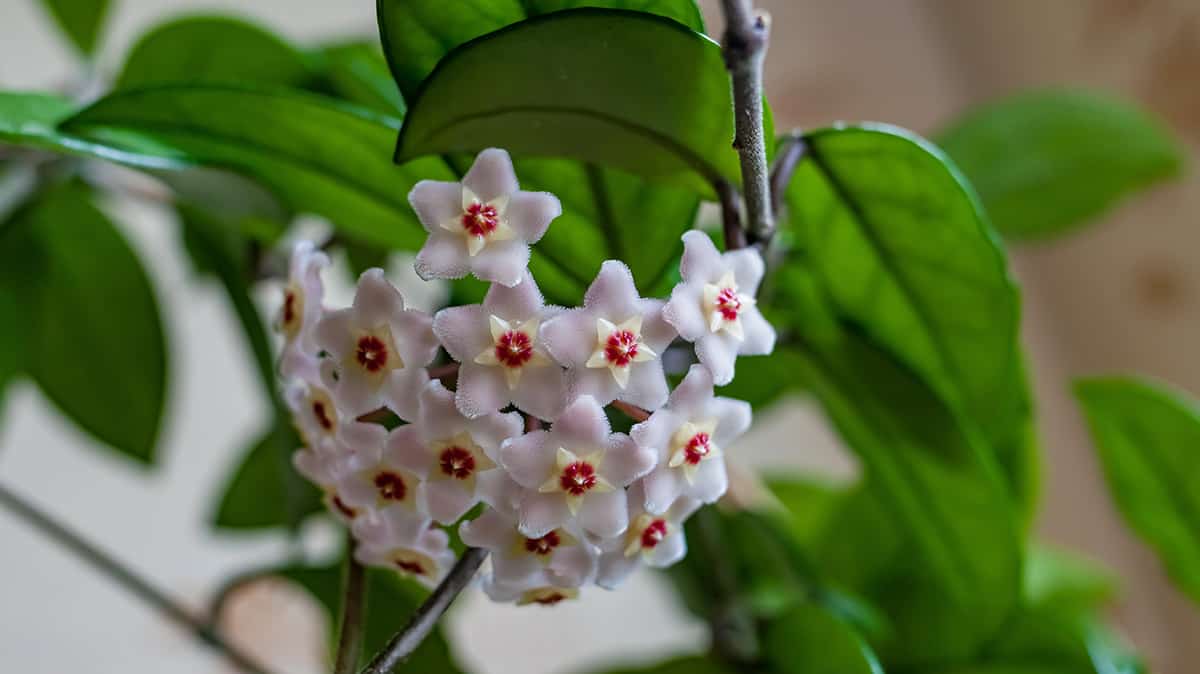
Hoyas bring a delightful fragrance to your indoor space. These plants, with their sweet-smelling, star-shaped flowers, are a classic choice for your home. They have affectionately earned the names wax plants or porcelain flowers.
You’ll find the Hoya to be a low-maintenance plant. They thrive in bright, indirect light and require well-drained soil. Allow the soil to dry between waterings, especially during cooler months. This simplicity in care makes them ideal for busy plant lovers.
With a variety of leaf shapes and colors, Hoyas provide visual interest. Their leaves can offer a lush backdrop to the vibrant flowers. Your Hoya’s foliage might also enjoy occasional misting to maintain humidity.
The Hoya’s flowers are its highlight. When in bloom, the flowers emit a pleasant aroma. They appear in clusters and can be quite a spectacle. Most Hoyas will begin to flower when they are a few years old.
Tuberose
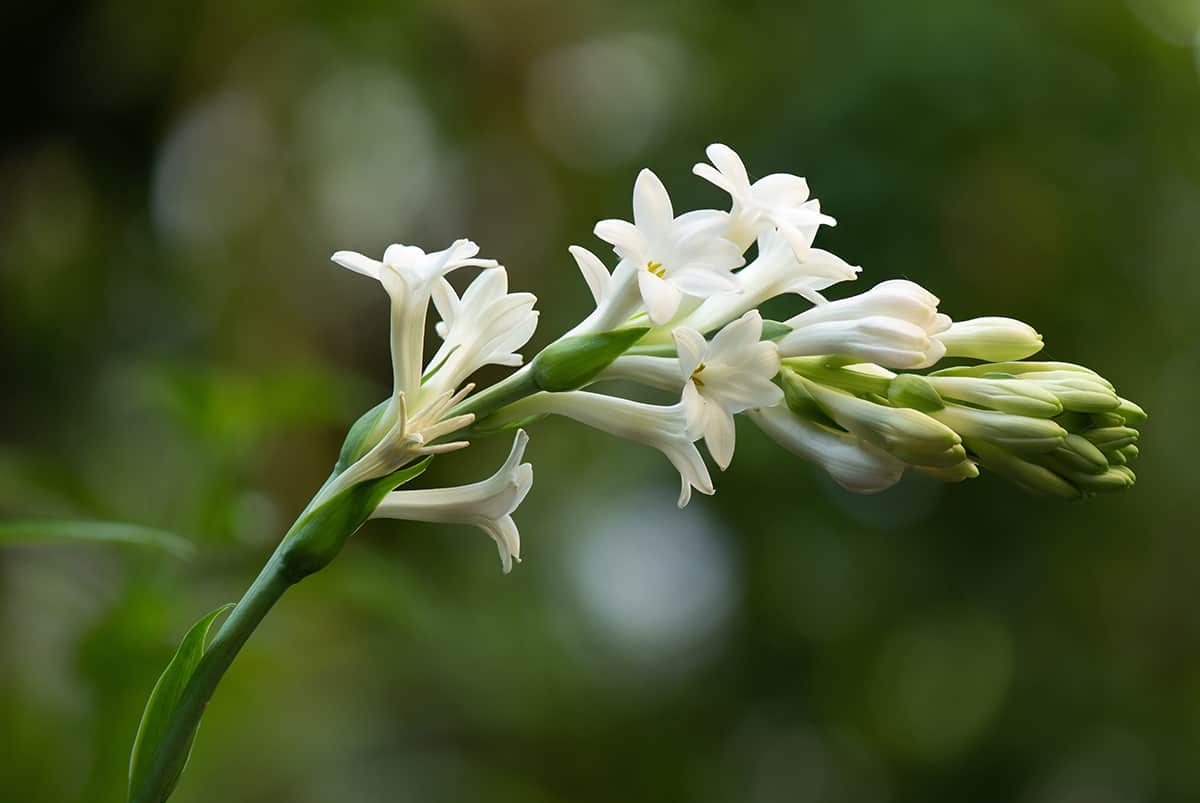
You enjoy the scent of tuberoses most at night when their white blooms open and release an intense perfume. This plant thrives in well-drained soils and bright sunlight.
Tuberose is not a true bulb. Despite this, you plant them in spring just as you would with bulbs. You should plant them about 2 inches deep in an organically rich medium, ensuring you keep the soil moist throughout the growing season.
Tuberose is suitable for warmer zones, ideally 8 and 9. However, with proper care, you may grow them in cooler climates. Their captivating scent makes them a prized choice for fragrant indoor gardens.
After the blooming period, as the leaves are yellow, watering is reduced. This plant enters a period of dormancy in winter. Knowing this helps you care for your tuberose adequately year-round. Remember to provide protection against cold if you live in an area that experiences frost.
Their aromatic flowers are among the most fragrant garden plants, and they add a delightful scent to any room. Through consistent moisture and full sun, they flourish, rewarding you with their striking presence and perfume.
African Violet
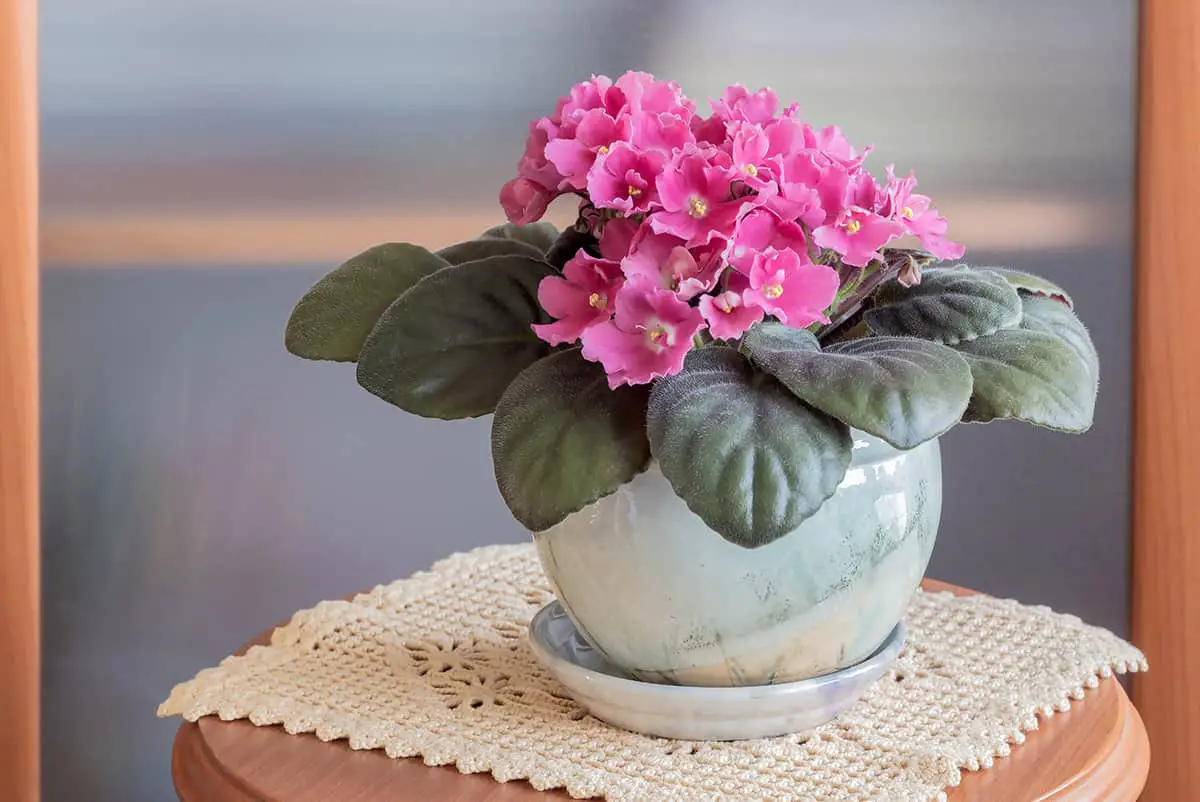
African violets bring a splash of color to your indoor spaces. They are fragrant indoor plants, known for their lush leaves and vibrant blooms. To start with, you need the right conditions for growth. These plants thrive in moderate temperatures and humidity levels.
Light is crucial for African violets. They prefer bright, indirect sunlight. An east-facing window provides ideal light conditions. However, too much direct sunlight can harm the leaves, causing them to scorch.
Watering your African violet requires care. Use room temperature water and avoid wetting the foliage. It’s best to water from the bottom to prevent leaf spots and disease. Let the pot stand in water for a short time, then pour out any excess.
Soil for African violets should be well-draining and rich in organic matter. A mix of leaf mold, peat moss, sand, and loamy soil supports healthy growth. Ensure the pot has drainage holes to prevent waterlogging.
Finally, monitor the temperature. Your African violet prefers 60-80°F. Night temperatures shouldn’t drop below 65°F. If you’re comfortable, your plant likely is, too, as confirmed by UMN Extension. Remember, steady conditions without drastic changes work best for these delicate plants.
Paperwhite Narcissus
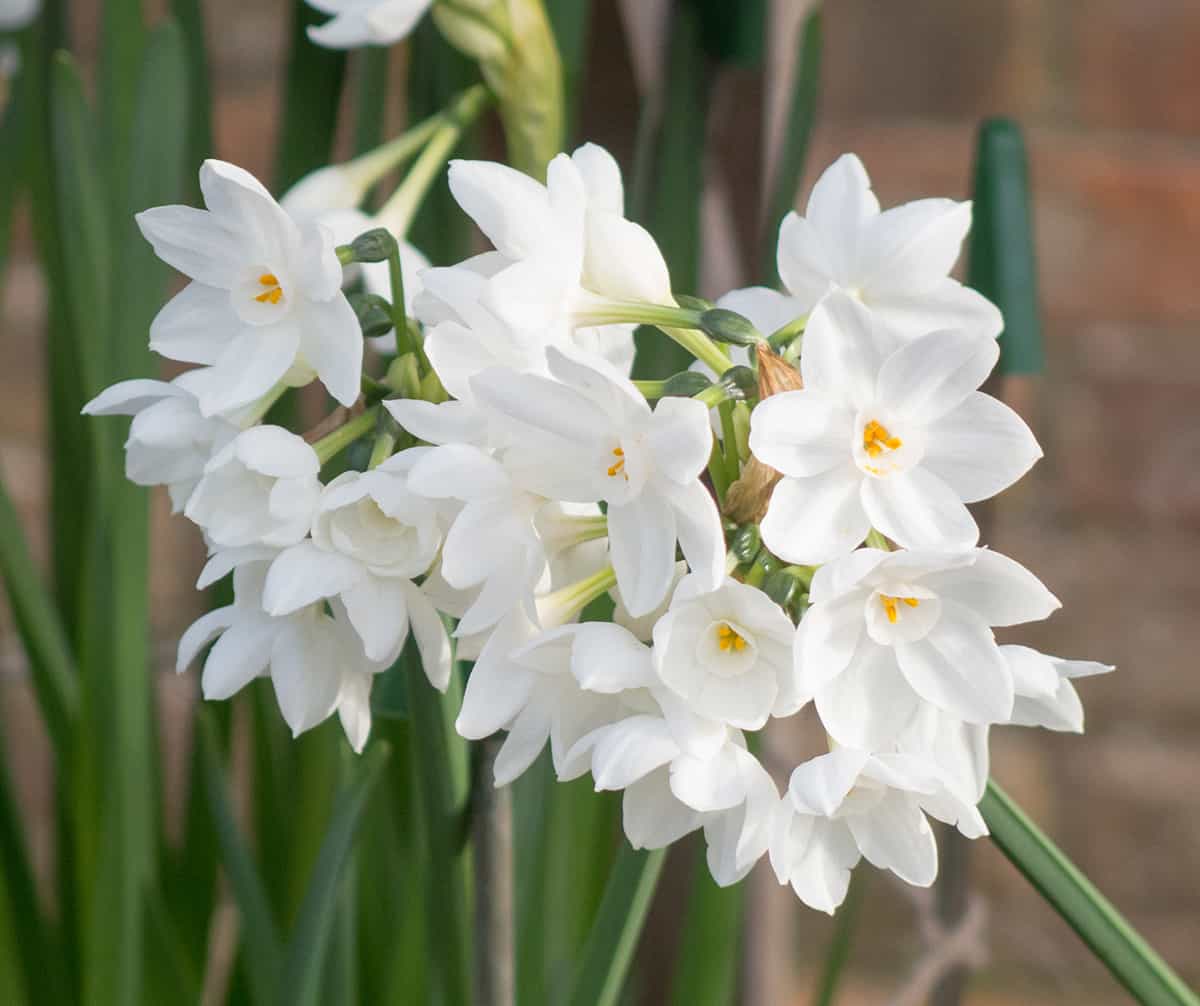
The Paperwhite Narcissus is a winter-blooming indoor plant. You’ll enjoy its sweet fragrance during the colder months. This plant thrives in well-drained soil or even just pebbles and water. It’s suitable for your home as it requires minimal care.
To start growing Paperwhite Narcissus, choose a pot that provides ample drainage. Plant the bulbs with the pointed ends up, leaving the tips exposed. You can plant them close to each other but they shouldn’t touch. The bulbs don’t need pre-chilled treatment, making the process simpler for you.
These blooms are known for their striking white flowers and delightful scent. They typically flower for two to three weeks. For an optimal display, place your Paperwhites in a spot with bright, indirect light. Keep the soil or pebbles moist, but avoid overwatering to prevent rot.
If you find the Paperwhite Narcissus too tall, a solution with diluted alcohol can help. This method stunts the growth while preserving the plant’s beauty and fragrance. It’s an easy trick to maintain plant height without affecting the bloom quality.
Ginger

Ginger, a wonderful selection for your indoor garden, not only has a distinct aroma but also boasts decorative appeal. This plant varies from other houseplants because of its robust fragrance and the tropical ambiance it creates.
Ginger thrives indoors with the right care. It prefers well-draining soil and consistent moisture, but be careful not to overwater. You should place your ginger plant in a spot with indirect, filtered sunlight. Too much direct sun may harm the leaves.
When you grow Hedychium gardnerianum, known as Kahili ginger, you’ll notice its striking flowers. These blooms are bright and fragrant, perfectly enhancing any room.
During the winter months, maintaining ginger indoors becomes especially rewarding. Not only does it add zest to your dishes, but it also serves as an exotic ornamental plant. The University of Vermont Extension suggests growing ginger indoors for both its culinary and decorative benefits.
Remember, patience is key. Ginger can take several months to mature but it is definitely worth the wait.
Violet
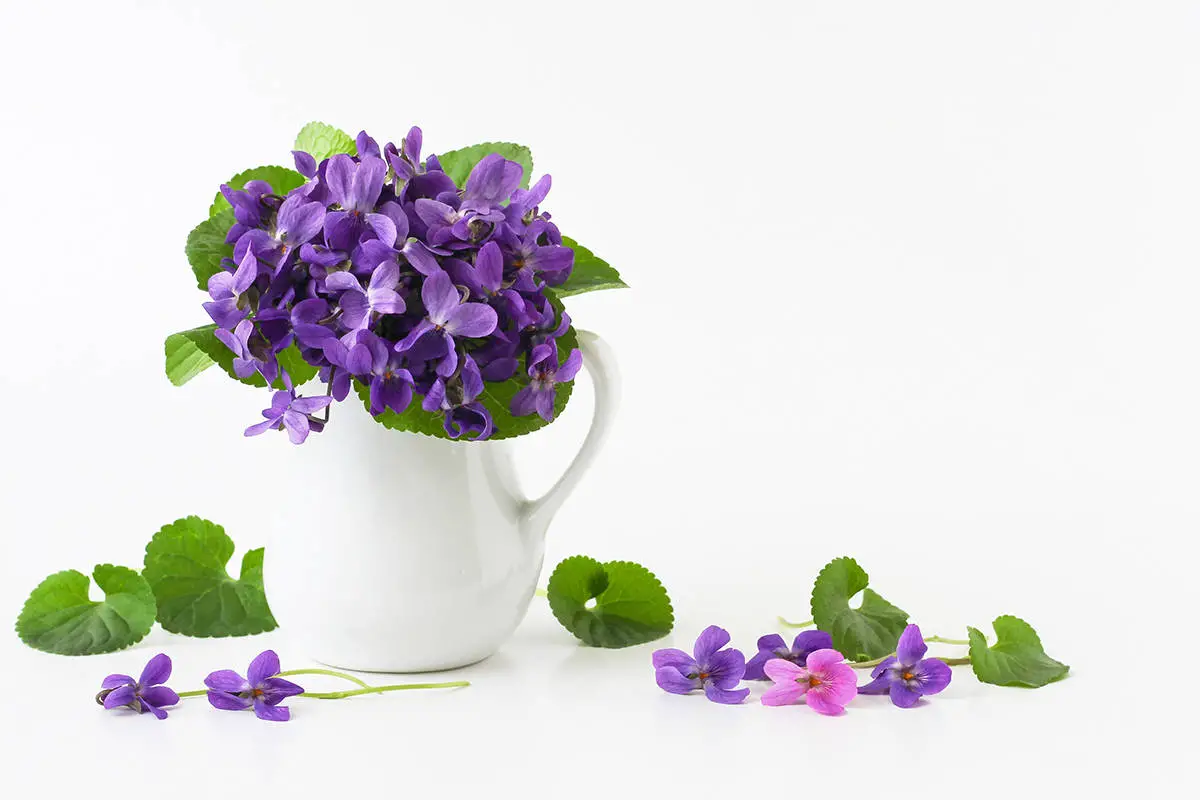
Your space becomes livelier with Viola odorata, commonly termed as Fragrant Garden Violet. This plant has both aromatic and edible flowers.
Caring for violets is simple. You need well-draining soil and moderate sunlight. These plants thrive in cooler temperatures. Keep them in an indirect light for best growth.
The scent of violets is well-regarded. People often use it in perfumes. With violets in your home, you get a natural perfume source.
Violets also have a charming appearance. Their blooms provide a touch of color. Typically, you can expect purple flowers, but some may vary. They can offer white or pink blossoms as well.
You should water them when the soil is dry to the touch. Overwatering can harm the plant. Make sure your violet’s roots are not sitting in water.
